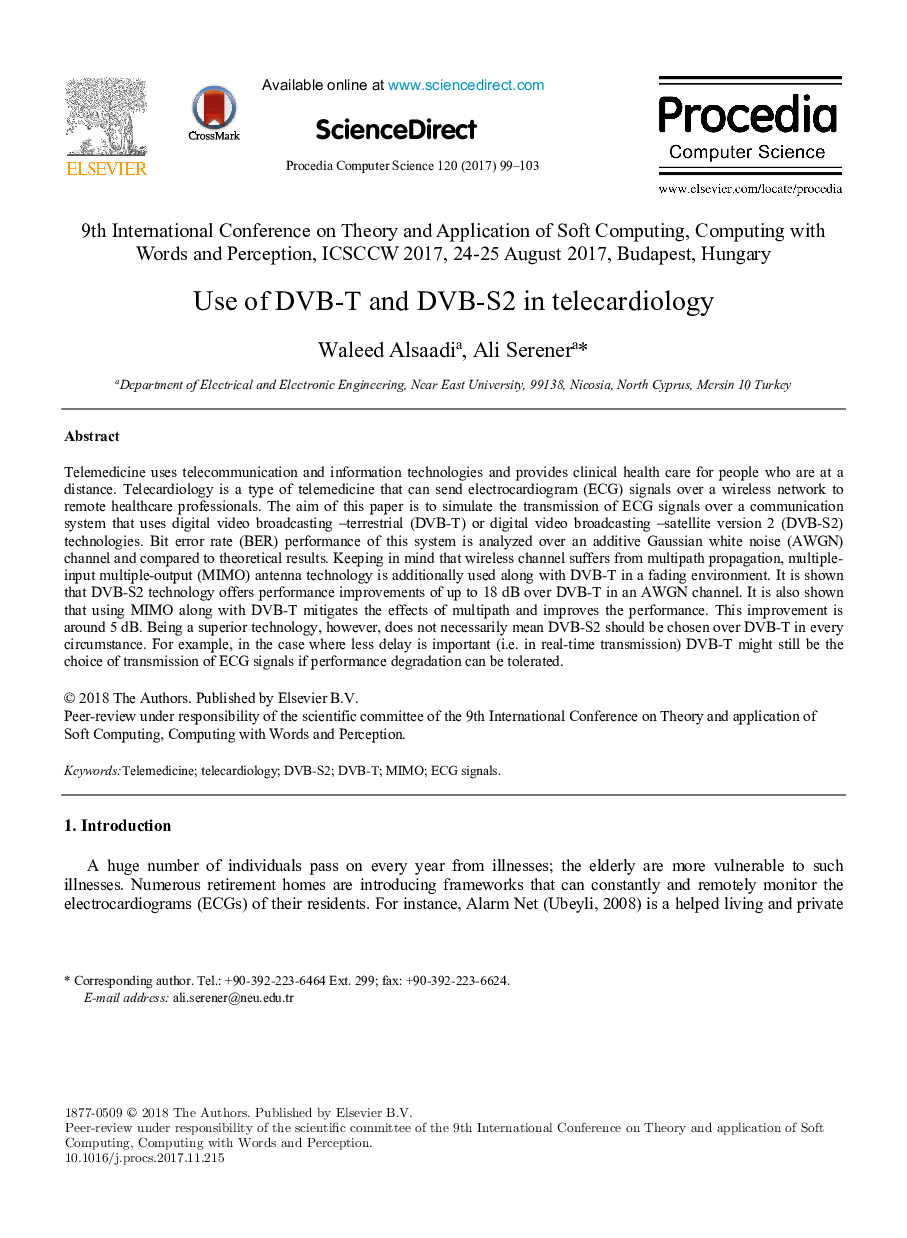| Article ID | Journal | Published Year | Pages | File Type |
|---|---|---|---|---|
| 6901586 | Procedia Computer Science | 2017 | 5 Pages |
Abstract
Telemedicine uses telecommunication and information technologies and provides clinical health care for people who are at a distance. Telecardiology is a type of telemedicine that can send electrocardiogram (ECG) signals over a wireless network to remote healthcare professionals. The aim of this paper is to simulate the transmission of ECG signals over a communication system that uses digital video broadcasting -terrestrial (DVB-T) or digital video broadcasting -satellite version 2 (DVB-S2) technologies. Bit error rate (BER) performance of this system is analyzed over an additive Gaussian white noise (AWGN) channel and compared to theoretical results. Keeping in mind that wireless channel suffers from multipath propagation, multiple-input multiple-output (MIMO) antenna technology is additionally used along with DVB-T in a fading environment. It is shown that DVB-S2 technology offers performance improvements of up to 18 dB over DVB-T in an AWGN channel. It is also shown that using MIMO along with DVB-T mitigates the effects of multipath and improves the performance. This improvement is around 5 dB. Being a superior technology, however, does not necessarily mean DVB-S2 should be chosen over DVB-T in every circumstance. For example, in the case where less delay is important (i.e. in real-time transmission) DVB-T might still be the choice of transmission of ECG signals if performance degradation can be tolerated.
Related Topics
Physical Sciences and Engineering
Computer Science
Computer Science (General)
Authors
Waleed Alsaadi, Ali Serener,
